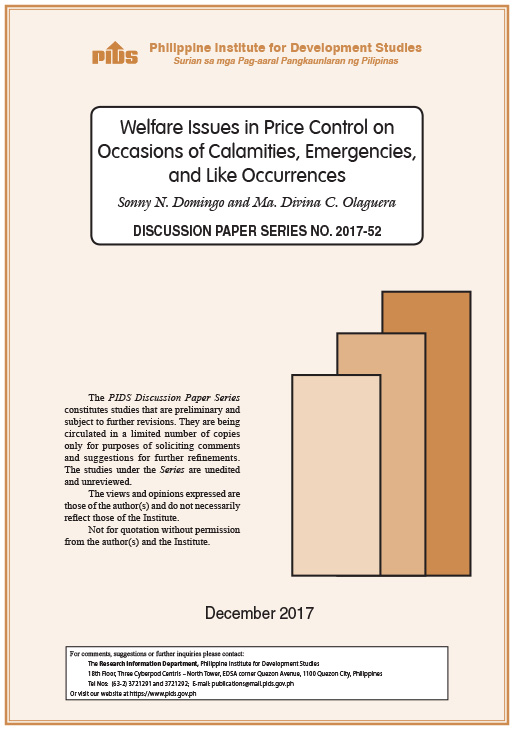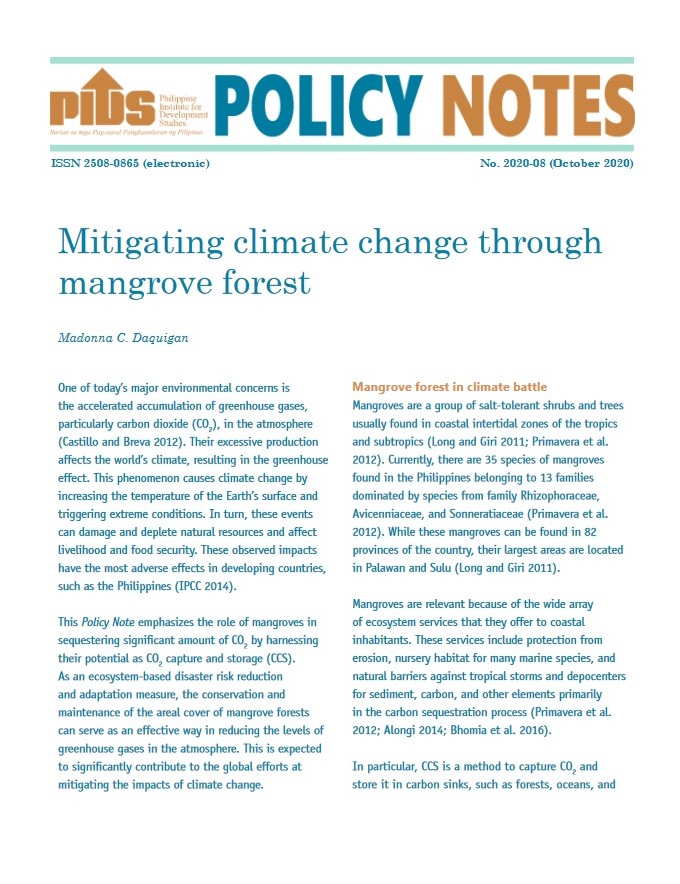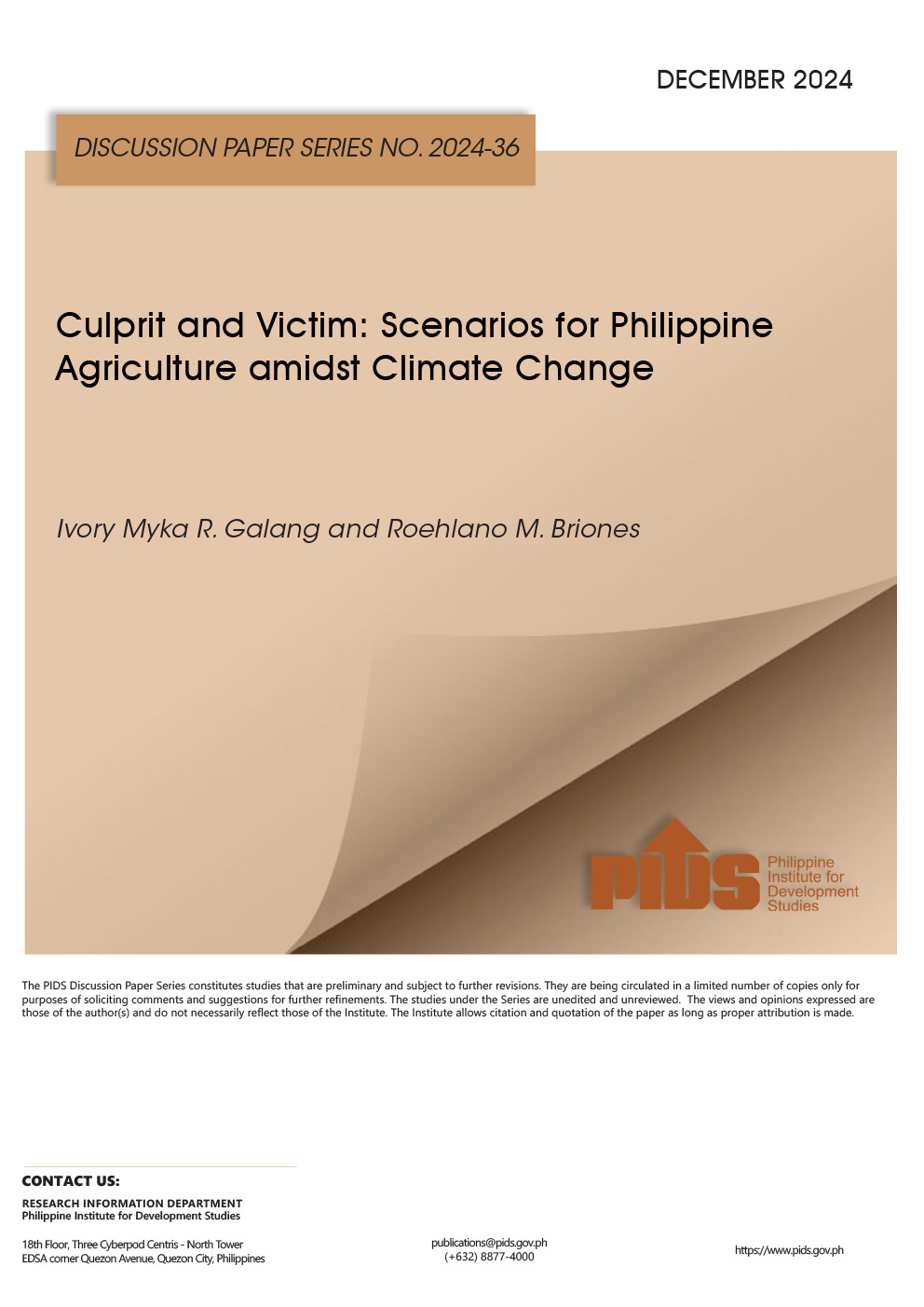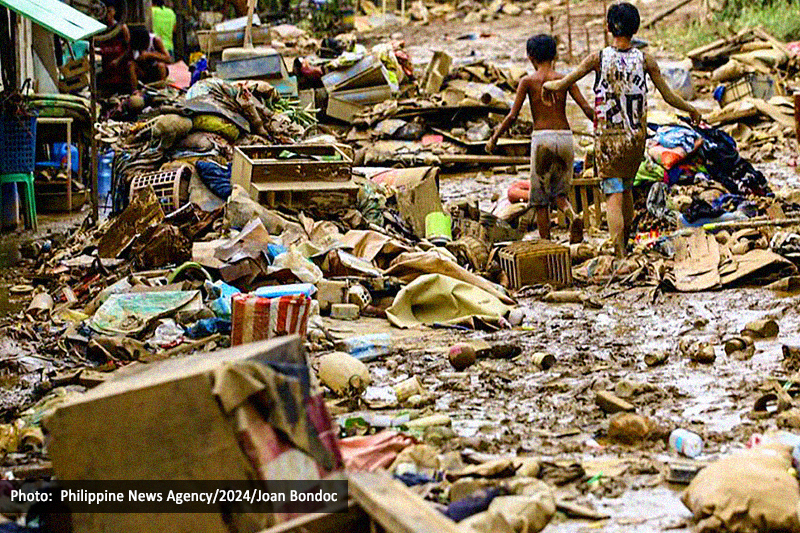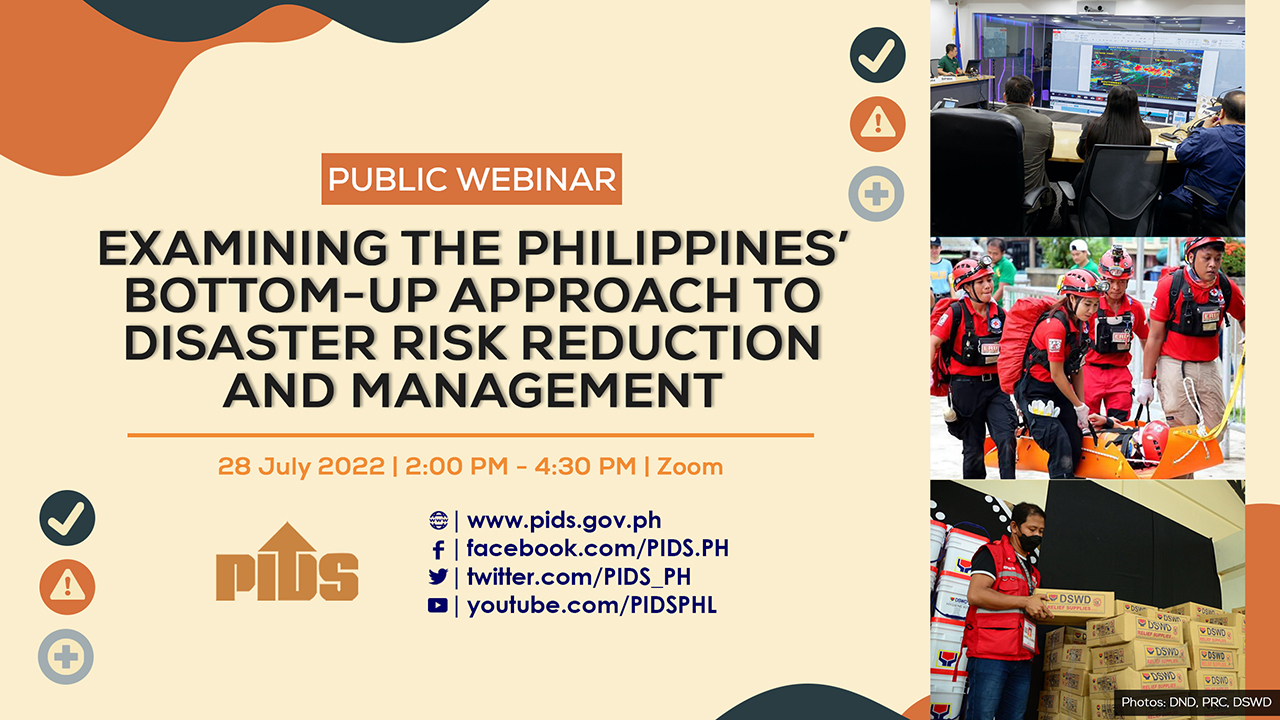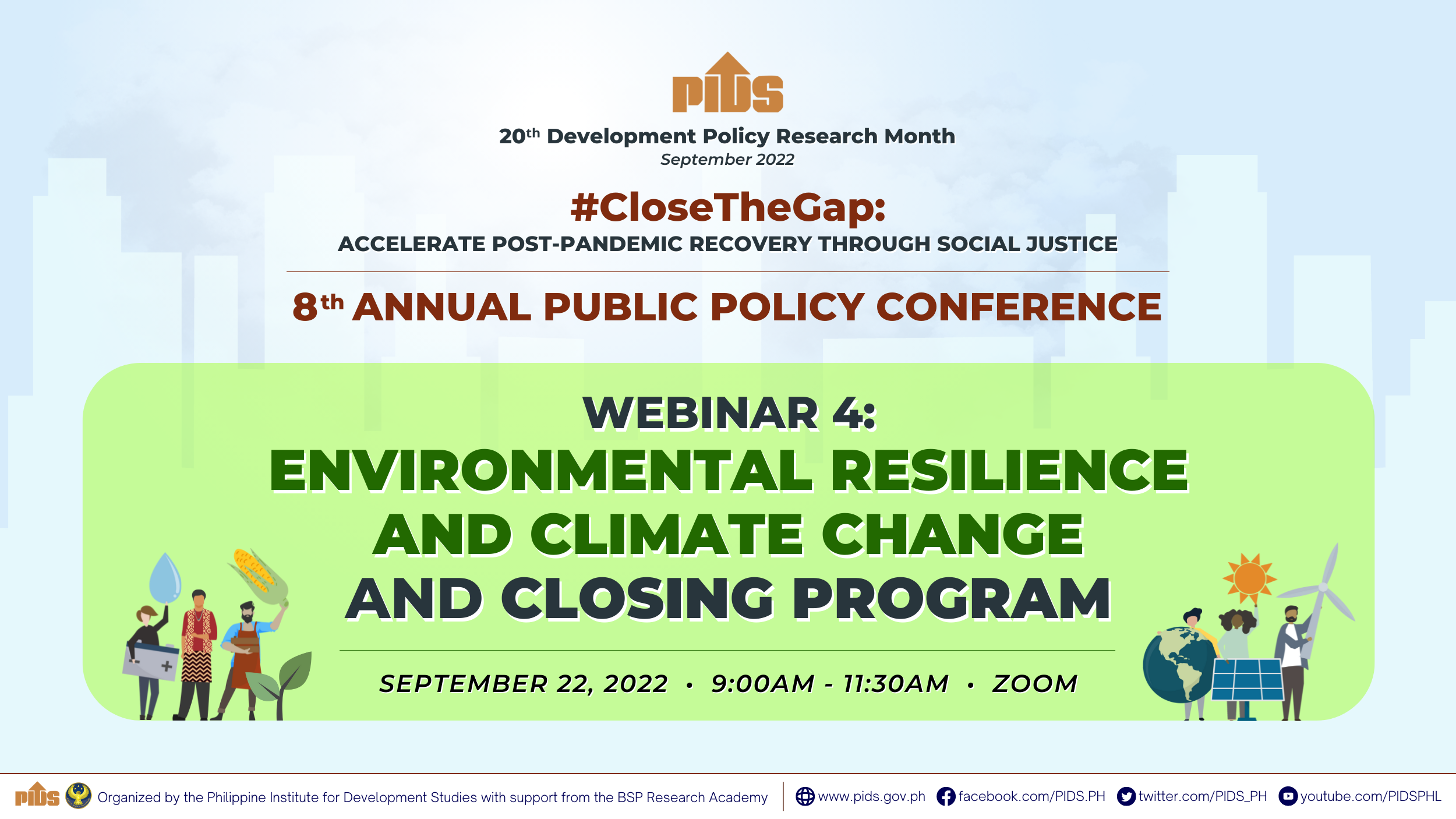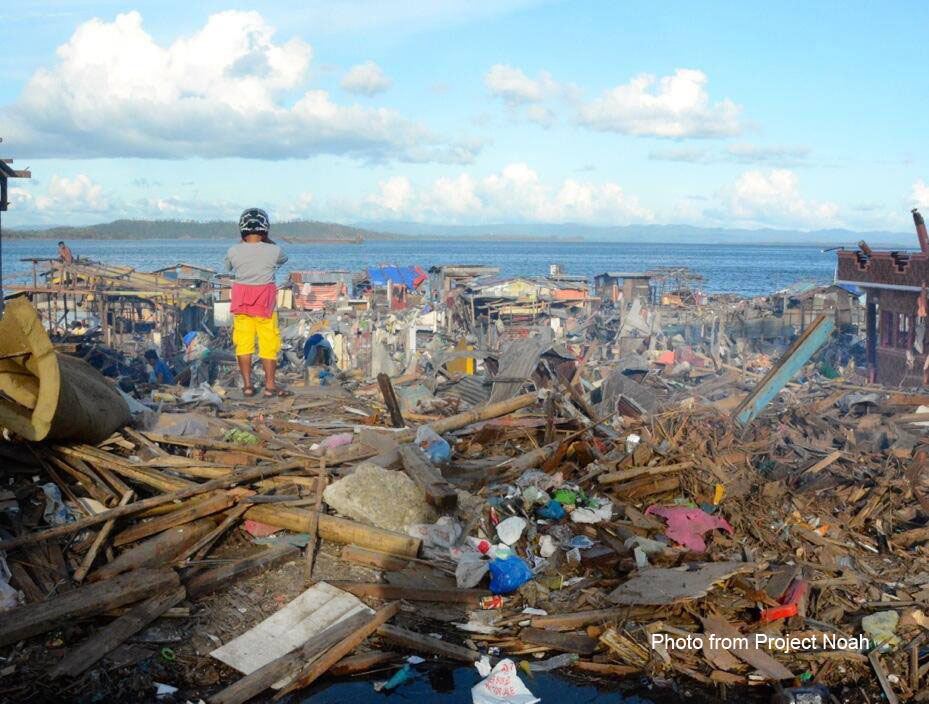
Given its high exposure to disaster risk, the Philippines cannot continue to have a lead agency on disaster management with coordinative functions only, said Philippine Institute for Development Studies (PIDS) Senior Research Fellow Sonny N. Domingo and Research Assistant Ma. Divina C. Olaguera.
In their paper "Have We Institutionalized DRRM in the Philippines?", the authors from the state think thank urged government to review the existing structure and functions of the National Disaster Risk Reduction and Management Council (NDRRMC), a coordinating body authorized to craft policies as well as integrate, supervise, monitor, and evaluate DRRM operations in the country.
“The NDRRMC, given its structure and composition, perennially suffers from competition with other departmental missions," said the authors, adding that the national government should “consider the creation of a unified disaster management agency” that will be responsible for all DRRM-related matters.
In particular, Domingo and Olaguera proposed for the assessment of the Office of Civil Defense (OCD), which serves as secretariat and executive arm of the NDRRMC.
They said it is necessary to assess if OCD can function as a high-level institution that will lead, coordinate, and monitor the implementation of Republic Act (RA) 10121 or the Philippine DRRM Act of 2010, as well as the country’s National Disaster Risk Reduction and Management Plan (NDRRMP).
RA 10121 assigns the tasks of monitoring, evaluation, and coordination of DRRM programs, projects, and activities to OCD. But the authors opined that other government institutions are in a better position to assume these responsibilities.
An example of this, said Domingo and Olaguera, is the institutional arrangement between the Department of the Interior and Local Government (DILG) and the OCD on the review and recommendation of appropriate plans for local government units when it comes to hazards. They pointed out that “while the OCD has the mandate under the law, the task requires work and resources which the DILG has the capacity.” The same realities, they explained, exist with other DRRM partners.
Another function that can be delegated to other partners and line agencies is the monitoring and evaluation of DRRM initiatives. According to the authors, data and scientific knowhow should be processed and translated into appropriate behaviors on the ground.
“Advisories from science and service organizations, knowledge products from the academe, and other appropriate technological interventions and novel approaches can be disseminated through a multi-stakeholder approach involving the private sector, civil society, nongovernment organizations, and other community-based interest groups,” the authors proposed.
Specifically, the authors recommended the tapping of local partners like universities as a good option in augmenting OCD’s capacity in monitoring and evaluating DRRM efforts.
Also, Domingo and Olaguera explained that as an entity at the helm of the council, OCD should be able to actively promote cooperation and coordination among member-agencies of the NDRRMC in order to mitigate the impact of disasters in the country.
Based on the World Disaster Report 2014 and the Global Climate Risk Index 2014 Report, respectively, the Philippines is the second most affected by weather-related losses and the second most disaster-prone among 171 countries.
“Aside from the cost on human lives, the Philippines incurs massive economic losses from disasters. From 2005 to 2014, it had lost an average of USD 1.6 billion every year, equivalent to PHP 79.5 billion pesos," revealed the authors. ###
If you want to know more about this study, you may download the discussion paper from the PIDS website.
In their paper "Have We Institutionalized DRRM in the Philippines?", the authors from the state think thank urged government to review the existing structure and functions of the National Disaster Risk Reduction and Management Council (NDRRMC), a coordinating body authorized to craft policies as well as integrate, supervise, monitor, and evaluate DRRM operations in the country.
“The NDRRMC, given its structure and composition, perennially suffers from competition with other departmental missions," said the authors, adding that the national government should “consider the creation of a unified disaster management agency” that will be responsible for all DRRM-related matters.
In particular, Domingo and Olaguera proposed for the assessment of the Office of Civil Defense (OCD), which serves as secretariat and executive arm of the NDRRMC.
They said it is necessary to assess if OCD can function as a high-level institution that will lead, coordinate, and monitor the implementation of Republic Act (RA) 10121 or the Philippine DRRM Act of 2010, as well as the country’s National Disaster Risk Reduction and Management Plan (NDRRMP).
RA 10121 assigns the tasks of monitoring, evaluation, and coordination of DRRM programs, projects, and activities to OCD. But the authors opined that other government institutions are in a better position to assume these responsibilities.
An example of this, said Domingo and Olaguera, is the institutional arrangement between the Department of the Interior and Local Government (DILG) and the OCD on the review and recommendation of appropriate plans for local government units when it comes to hazards. They pointed out that “while the OCD has the mandate under the law, the task requires work and resources which the DILG has the capacity.” The same realities, they explained, exist with other DRRM partners.
Another function that can be delegated to other partners and line agencies is the monitoring and evaluation of DRRM initiatives. According to the authors, data and scientific knowhow should be processed and translated into appropriate behaviors on the ground.
“Advisories from science and service organizations, knowledge products from the academe, and other appropriate technological interventions and novel approaches can be disseminated through a multi-stakeholder approach involving the private sector, civil society, nongovernment organizations, and other community-based interest groups,” the authors proposed.
Specifically, the authors recommended the tapping of local partners like universities as a good option in augmenting OCD’s capacity in monitoring and evaluating DRRM efforts.
Also, Domingo and Olaguera explained that as an entity at the helm of the council, OCD should be able to actively promote cooperation and coordination among member-agencies of the NDRRMC in order to mitigate the impact of disasters in the country.
Based on the World Disaster Report 2014 and the Global Climate Risk Index 2014 Report, respectively, the Philippines is the second most affected by weather-related losses and the second most disaster-prone among 171 countries.
“Aside from the cost on human lives, the Philippines incurs massive economic losses from disasters. From 2005 to 2014, it had lost an average of USD 1.6 billion every year, equivalent to PHP 79.5 billion pesos," revealed the authors. ###
If you want to know more about this study, you may download the discussion paper from the PIDS website.

